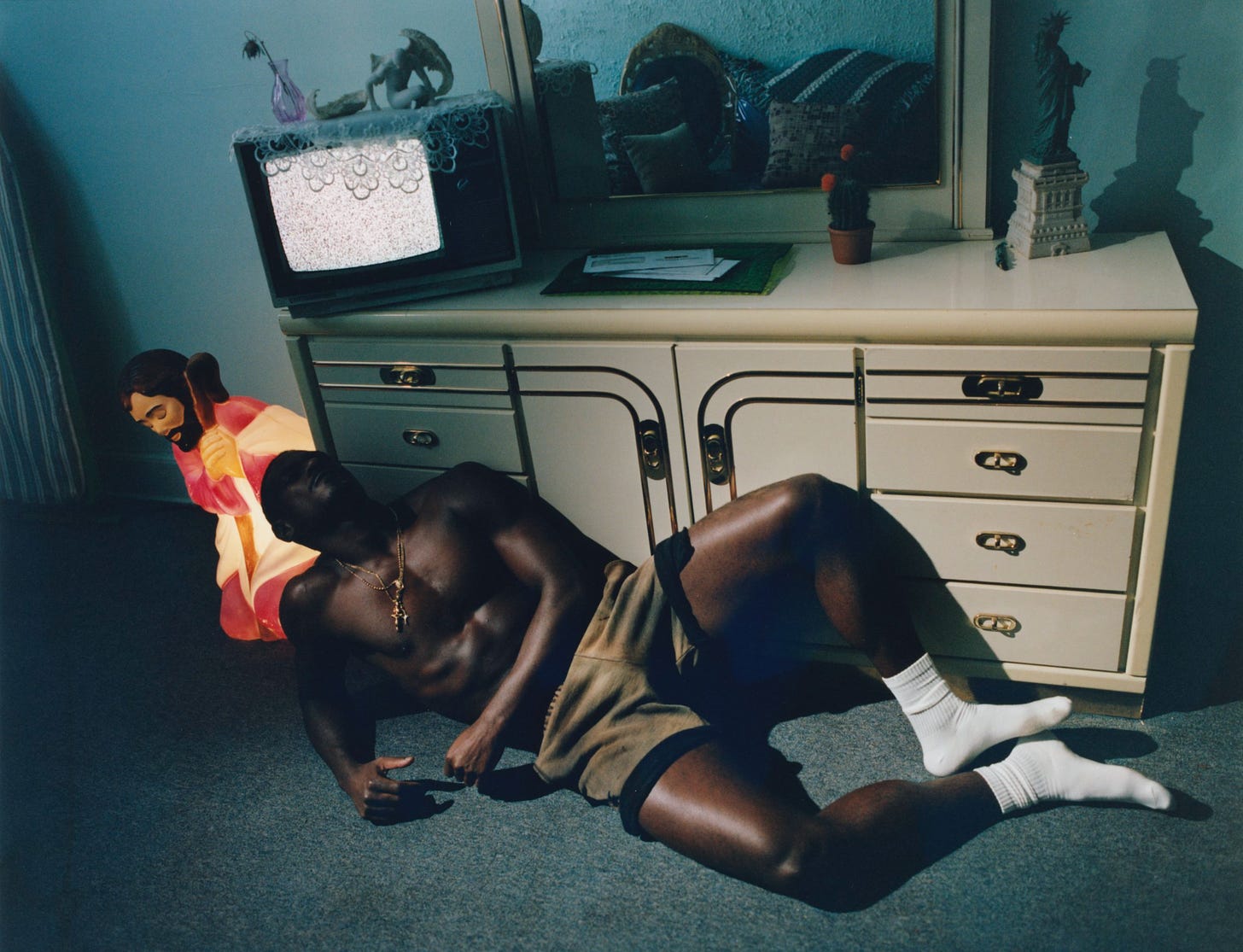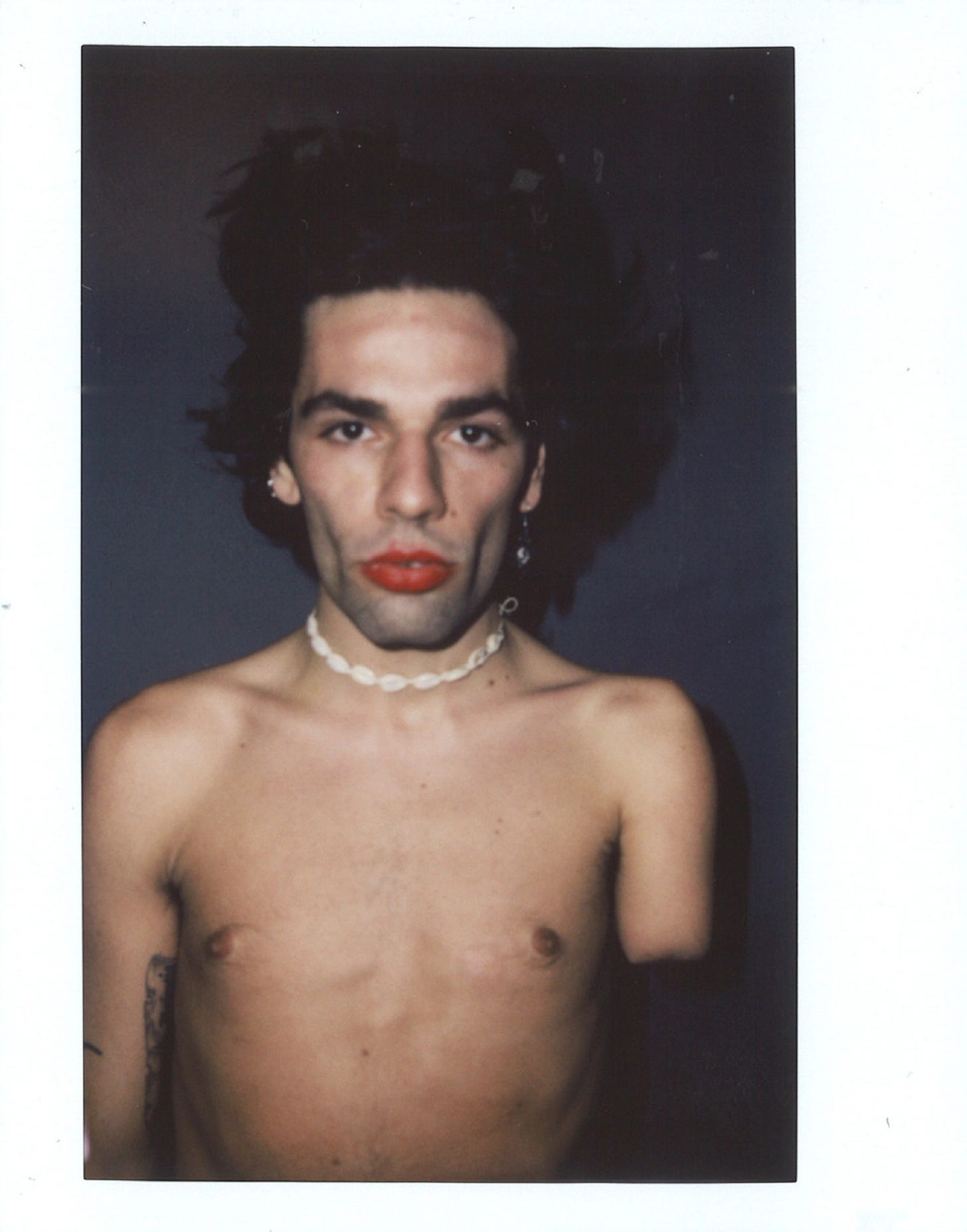Willy Chavarria is the best fashion storyteller right now, period. One might think that I’m kind of biased, because I’m obsessed with his namesake label. But I took a serious look at the matter, and I can confidently say that I’m very objective (yup).
Chavarria has masterfully integrated storytelling into his brand’s identity, leveraging it to forge deep, meaningful connections with his audience.
How does he succeed in crafting narratives that resonate so well? I identified four key elements: purpose, authenticity, relatability, and emotion.
1. Purpose
In the eyes of God, we are all one people deserving of dignity and grace. Dropped under a powerful picture on Instagram, these few words encapsulate the whole ethos of Willy Chavarria. They can be read between the lines of all the brand’s narratives, highlighting its purpose: to promote equal rights and lift others up – the Latin community, first and foremost, but also all the sidelined, the stigmatized, the disenfranchised. With a distinctive and consistent voice, Willy Chavarria speaks for those who are usually not heard, making sure to upset stereotypes and clichés.

Mr Chavarria focuses on making everyone feel seen, welcome and included, with their flaws, singularities and personal stories. He challenges normative beauty standards to encourage self-worth and individual expression, creating a feeling of pride and belonging among those who wear his creations.
In the same breath, the designer urges love, togetherness and solidarity. Each collection is imbued with a social and/or political commentary. His first-ever New York Fashion Week presentation featured models in a cage, to illustrate how people of color and different sexual orientations are boxed in by society. The latest one, titled América with an “é”, celebrated the vital role immigrants have played in the country, while addressing the U.S. presidential election. Mexican band Yahritza y Su Esencia opened the show by singing Juan Gabriel’s “Querida”, under a giant, suspended American flag. Yo quiero ver de nuevo luz en toda mi casa. In dark times, we yearn for light. With pieces in collaboration with the American Civil Liberties Union (ACLU) and United Farm Workers (UFW), Chavarria reminded us that we, as a united bloc, have the power to make a difference. Behind the plea for social justice, there was a message of hope.
Based on an ‘edutaining’ approach, Willy Chavarria’s overall storytelling allows us to see the real América, showcasing the country’s failures, rawness and diversity, as well as fragments of history unknown to the general public.
Through humanistic narratives, the label connects with people on a values-driven level, and inspires them to actively participate in its mission (and buy its designs). More informed, discerning and ‘woke’, today’s consumers are not only interested in what brands sell but also what they stand for.
Takeaway for brands: Use storytelling to convey your purpose and bond with consumers over shared values.
2. Authenticity
Having a purpose is pretty popular right now, and many claim one as part of a marketing strategy. With Willy Chavarria, it’s not only genuine, it’s visceral.
As a queer Mexican-American from a working-class family, the man is intimately familiar with the worlds he’s depicting, and feels deeply what he’s preaching. Raised by parents actively involved in the civil rights movement, he’s always had a strong social conscience and now ensures his brand upholds his convictions.
Take the faces that embody his stories, for example. Unlike white-staffed brands that use more or less diverse casts to pretend they’re committed to inclusivity, Chavarria collaborates behind the scenes with talents who look exactly like those who grace his campaigns and runways: black, brown and beautiful.
His storytelling mirrors his sincere beliefs and aligns with the reality of his actions, allowing him to build trust, credibility and reliability.

And then, there’s the mundanity of the label’s visual narratives, inspired by everyday life in all its beauty. Real people are usually shown within real environments (mainly in the streets or modest houses), with no bullshit and artifice. A raw, pure energy emerges there, as a nice snook to the well normed aesthetic of luxury.
As I said in the previous issue, with the ongoing economic fragility and decline in purchasing power, coupled with the ubiquity of glamorous, flawless images, people are increasingly craving campaigns that reflect the world they live in.
In an industry based on appearance, Willy Chavarria is quite a rarity. With him, authenticity prevails over everything. A stance that fosters proximity, identification and bonding, as consumers are more inclined to engage with brands they perceive to be sincere and down-to-earth.
Takeaway for brands: Be genuine in your commitment to your purpose + Favor realistic visual narratives that people can identify with.
3. Relatability
Willy Chavarria doesn’t seek to fall in line. He rejects boxes and labels and conventions. His brand’s stories are carried by ordinary, relatable protagonists, who come in different shapes, sizes and skin colors.
Instead of calling on traditional modeling agencies, Chavarria casts via Instagram or the streets of New York City. Once, he was so struck by the beauty of an Uber Eats worker that he recruited him there, while he was delivering an order. It’s not just about looks, but personality.
We love the freaks. I look for strength in character. I look for a sincerity in attitude and self-awareness. I have no interest in beautiful people who haven't been challenged by life. I like people who have struggled and know what it is to fight.*
The heroes of Chavarria’s narratives embody qualities such as resilience and temerity, but they also embrace vulnerability. The Safe From Harm film showed them coping with grief and emotions, while they sported bleary eyes and metallic tears for the Fall/Winter 2018 show.
Vulnerability helps empathy and humanization. It breeds a deeper, more personal connection with people, who can see themselves in the pain and struggles.
If you pay attention, you’ll spot some recurring characters throughout the seasons, like Erik “Chachi” Martinez, Leonardo Cotton, Emmanuel “Chino” Salazar or Yuji Rico. The latter even got his mom Erika, a forty-something construction worker, hired as a model.
“Almost all of the cast are friends and family type people” shares Chavarria with The Face. “[Creating a family environment] on every project is essential to delivering sincere and impactful work”. Beyond that, it promotes a sense of community, that folks strive for in our increasingly individualistic society.
Takeaway for brands: Rely on characters that people can relate to and empathize with.
4. Emotion
Emotion is what brand storytelling is all about. It’s the path to consumers’ hearts. Here, it basically stems from all the points above: purpose, authenticity, relatability.
In their book Le luxe éternel, Gilles Lipovetsky and Elyette Roux state that luxury is defined by the difference between a very good and an emotional thing. Creating emotions is the core of the industry. By doing so, Chavarria is able to build profound, enduring relationships with his audience. That’s what we call brand attachment – a deep, affective connection that transcends the mere exchange of goods and services, leading to emotional loyalty.
Takeaway for brands: Emotion is everything.

Thanks to carefully crafted narratives, Willy Chavarria’s designs take on a broader meaning, gaining in substance and value. You’re not just buying those pieces for their intrinsic qualities, but for everything they evoke and embody. Each collection has a specific title and tells a story of its own, standing out in a formulaic, almost soulless, market.
In late March, Phoebe Philo said to The New York Times: “I don’t feel that there’s a huge amount of storytelling that needs to be done. […] Someone telling me a story isn’t going to make me like it more. It is a coat. It’s a pair of trousers.” Well, I don’t agree. I mean, a good product is a good product but… quality alone can’t make a strong, lasting impact. It needs depth. By weaving emotional, powerful narratives, you don’t just arouse desire, you create devotees.
By Marine Desnoue.
*Willy Chavarria for PAPER

Thanks for reading The Creative Brief! If you like this newsletter, don’t hesitate to spread the word about it 🫶
And if you haven’t done yet so, hit the subscribe button so you never miss anything!









🖤🖤🖤
Marine - this was a great read!